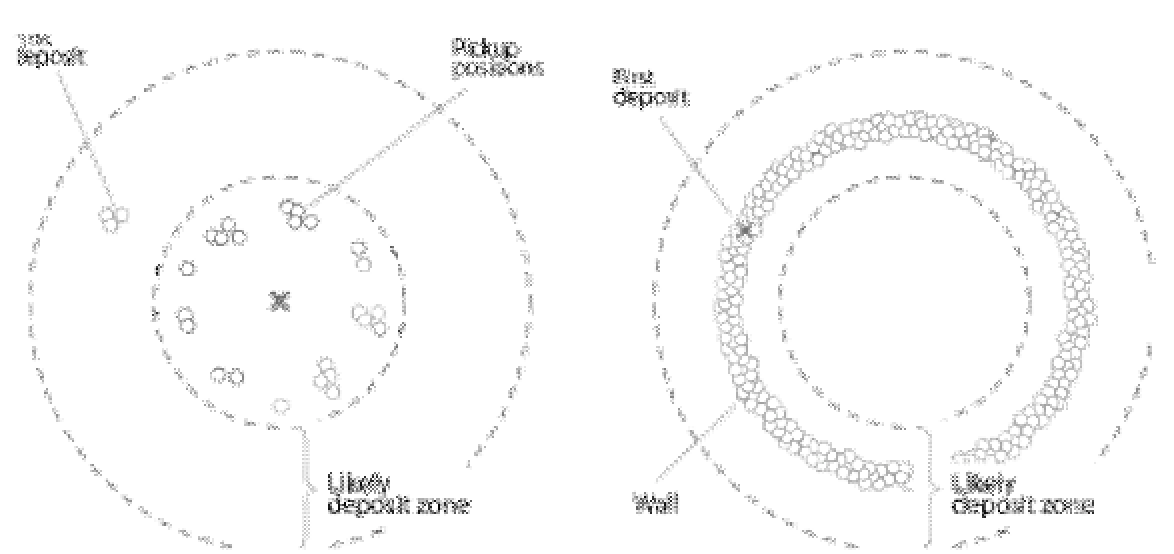Biomedical Engineering Reference
In-Depth Information
FIGURE 13.6
Collective decision making using stigmergy, i.e., the concept whereby individuals modify the environment,
which in turn modifies the behavior of the individuals. The drawing illustrates the principle of how ants build a wall at a
position determined by the distance from the pickup place and the positions where the other ants have placed their building
blocks. The very simplified drawing is based on the description in Ref.
24
.
from the brood, as shown in
Figure 13.6
. The
worker ants collect grains and deposit them
based on the distance from the brood and the
local density of grains
[24]
. The presence of
grains generally acts as a positive reinforce-
ment, and ants are most likely to drop a grain
if the distance to the brood is right and there
already are other grains present at the site.
The collective nonhierarchical behavior of
social insects has significant biomimetic poten-
tial in management, manufacturing, and com-
puter science. Examples include robot
coordination, flow shop scheduling, and com-
parisons between collective decision-making
strategies in house-hunting ants and those used
in internet search engines
[25]
.
The concept of stigmergy is used in open-
source user-driven software on the internet,
such as the encyclopedia Wikipedia (wikipedia.
org). Here is the basic principle that anyone can
write what they like, but other users can alter
the content if they do not agree or if they have
supplementary information. When someone
starts to describe a topic, others will tend to
expand it—so the mere existence of elements of
a description will stimulate further writing on
the topic. However, an important difference
between the way human beings and ants
approach stigmergy is that humans sometime
counteract and write things that are not in the
common interest of the software-user commu-
nity. Wikipedia therefore has editors who can
intervene and remove undesired material.
Human building construction is a compli-
cated task involving many different actors who
are mutually dependent on the outcome and
timing of each other's work. Part of the planning
and control is done by bringing many of the
actors together at meetings, so that they together
can experience the present state of the building
project and determine if plans should be
changed. This coordination activity can be seen
as stigmergy, since the planning of the building
construction relies on actors monitoring the pro-
gress of the work and changing plans according
to those observations. Perhaps, the building


